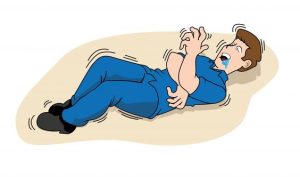Unraveling the Mystery: The Study’s Origins
In a decade-long study investigating sudden unexplained child deaths, researchers have identified brief seizures accompanied by muscle spasms as a potential cause. This revelation comes as a significant breakthrough, shedding light on a connection previously unknown in the realm of pediatric health.
Statistics Behind the Tragedy
Sudden unexplained child deaths, affecting over 3000 families annually in the U.S., primarily involve infants, termed as Sudden Infant Death Syndrome (SIDS). However, a subset of cases, labeled Sudden Unexplained Death in Childhood (SUDC), involves children aged one and above, with over half occurring in toddlers aged one to three.
Analyzing the SUDC Cases
The study, conducted by researchers from the New York University Grossman School of Medicine, analyzed over 300 SUDC cases registered a decade ago. By utilizing extensive medical records and video evidence donated by families, researchers pinpointed instances of unexplained deaths in seven children, potentially linked to seizures. These seizures lasted less than 60 seconds, occurring within 30 minutes before each child’s demise.

Early Clues: Febrile Seizures Connection
For years, researchers have sought explanations for sudden child deaths, noting a correlation among those with a history of febrile seizures (seizures accompanied by fever). Early studies suggested a tenfold increase in the likelihood of sudden and unexpected death in children who experienced febrile seizures. In the SUDC cases registered at the New York University Langone Health Center, one-third also had a history of febrile seizures.
Study’s Publication: A New Dawn
Published on January 4th in the journal “Neurology,” the study, conducted by a team of eight doctors, analyzed rare SUDC cases with recorded family videos. These videos, obtained from security systems or commercial baby monitors, were captured on the nights or afternoons when each child succumbed.
Video Evidence Unveils Seizures
Among the seven videos, five showed continuous play, revealing both audible sounds and visible movements indicative of ongoing seizures. The remaining two were triggered by sound or movement, with only one indicating muscle spasms, a sign of a seizure. Notably, only one child had a documented history of febrile seizures. Post-mortem examinations of all children involved in the study did not reveal a definitive cause of death.
A Personal Mission: Laura Gould’s Advocacy
Laura Gould, MSc, MA, PT, the lead researcher of the study and an assistant professor at the New York University Langone, emphasizes the importance of video evidence in including seizures in death investigations. Gould, who lost her own 15-month-old daughter to SUDC in 1997, played a pivotal role in establishing the SUDC registry and research collaborative at the New York University Langone School.
Implications and Future Research
While the study’s scale is small, its direct evidence underscores the potential role of seizures in sleep-related child deaths, typically unwitnessed events. Dr. Orrin Devinsky, a senior researcher and neurologist, states that further research is necessary to determine the frequency of seizure-related deaths in sleep-related fatalities and across different age groups, from infants to older children and adults.
Dr. Devinsky’s Insights
Dr. Devinsky, the Director of the Comprehensive Epilepsy Center at New York University Langone, believes that febrile seizures may be the smoking gun medical professionals have been searching for to understand the causes of these child deaths.
Call for Ongoing Research
Continued monitoring of child deaths and improved health records are essential to confirm whether seizures, with or without fever, play a role in sudden deaths. The study highlights the need for ongoing research to provide crucial insights not only into SUDC but also SIDS and epilepsy-related deaths.
Expert Panel and Collaborators
In this study, experts in forensic pathology, neurology, and sleep medicine meticulously analyzed the video quality, sound, and movements of each recording. Access to these videos, past and present, remains strictly limited to the researchers involved in the study.
Acknowledgments and Funding
This research received support from the SUDC Foundation, FACES – Finding a Cure for Epilepsy and Seizures, and the UL1TR001445 grant from the National Center for Advancing Translational Sciences and the National Institutes of Health.
Collaborators and Team
Besides Gould and Dr. Devinsky, other researchers from the New York University Langone School of Medicine involved in this study include Codi-Ann Reid and Dr. Alcibiades J. Rodriguez. Collaborating researchers from the SUDC Video Study Group include Dr. Alison Krywanczyk, Dr. Kristen Landi, Dr. Melissa Guzzetta, Dr. Heather Jarrell, Dr. Kelly Lear, Dr. Tara Mahar, Dr. Katherine Maloney, Dr. Declan McGuone, Dr. Alex Williamson, Dr. Katheryn Pinneri, along with public health master’s graduate Victoria Delavalle and medical doctoral student Daniel Friedman.
References:
- Gould, L., et al. “Seizures in sudden unexplained death in childhood: A population-based study.” Neurology. (Published online, Jan 4, 2024).
- Devinsky, O., et al. “Epilepsy and sudden unexplained death in childhood: The role of seizure videos.” Neurology. (Published online, Jan 4, 2024).
- SUDC Foundation. (https://sudc.org/)
- FACES – Finding a Cure for Epilepsy and Seizures. (https://www.nyulangone.org/faces)
